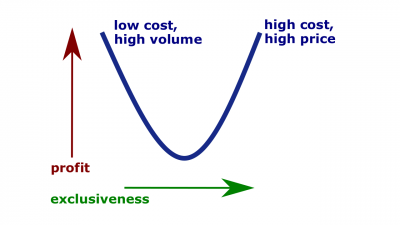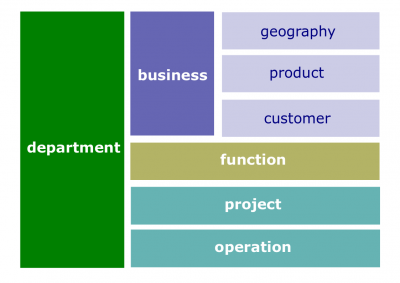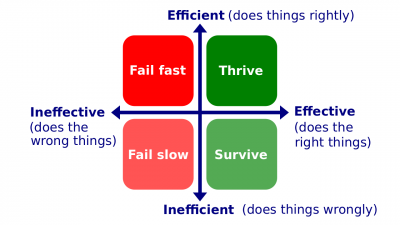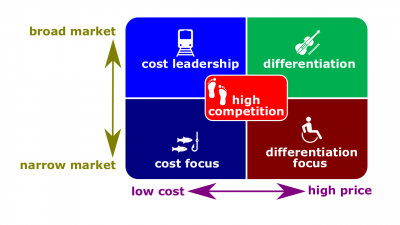Enterprise Architecture Quarter
Enterprise Architecture Quarter (hereinafter, the Quarter) is a lecture introducing the learners to portfolio design primarily through key topics related to enterprise architecture. The Quarter is the third of four lectures of Portfolio Quadrivium, which is the first of seven modules of Septem Artes Administrativi (hereinafter, the Course). The Course is designed to introduce the learners to general concepts in business administration, management, and organizational behavior.
Contents
Lecture outline
Feasibility Study Quarter is the predecessor lecture. In the enterprise research series, the previous lecture is Enterprise Intelligence Quarter.
- Portfolio design is the enterprise envisioning of the enterprise portfolio. This lecture concentrates on enterprise architecture because this architecture is the main outcome from this modeling.
Concepts
- Enterprise architecture. A composition of the interrelated businesses, process assets, enterprise factors, and personnel that together are known as an enterprise.
- Enterprise. An undertaking to create something and/or develop somebody, which takes some level of enterprise effort. In other words, an enterprise is one or more businesses unified in one system. An enterprise can also refer to an organizational unit, organization, or collection of organizations that share knowledge bases and other enterprise resources.
- Sector. The market that some market exchangeable or a group of interrelated products fits into. Examples include: consumer technology, cleantech, biotech, and enterprise technology. Venture Capitalists tend to have experience investing in specific related sectors and thus tend not to invest outside of their area of expertise.
- Enterprise business. The actual or potential practice of making enterprise's profit by engaging in commerce.
- Business. (1) An individual's regular occupation, profession, or trade; (2) The practice of making one's profit by engaging in commerce.
- Departmentalization. The basis by which jobs in an enterprise are grouped together.
- Portfolio engineering. The application of scientific principles to designing and/or modifying of the enterprise portfolio.
- Engineering. The creative application of science, mathematical methods, and empirical evidence to the innovation, design, construction, operation and maintenance of market exchangeables, systems, processes, businesses, and enterprises. To simplify, engineering is the application of scientific principles to practical ends.
- Startup business (or, simply, startup). (1) A business in its search of its business model, which usually means ways not to depend on external funding; (2) An enterprise in the early stages of operations. Startups are usually seeking to solve a problem of fill a need, but there is no hard-and-fast rule for what makes a startup since situations differ. Often, a company is considered a startup until they stop referring to themselves as a startup.
- Operational business. Any business, which business model generates revenue.
- Strategic business unit (SBU). A single independent business of an organization that formulates its own competitive strategy.
- SBU market. A target market of a strategic business unit (SBU). Any SBU handles one or more target markets, which on which other SBUs of the same enterprise rarely target.
- SBU resource. A resource of a strategic business unit (SBU).
- SBU business. A business of a strategic business unit (SBU). Any SBU handles one or more businesses, but any of those shall use the same competitive strategy.
- Competitive strategy. A formulated strategy for how a strategic business unit is going to compete. This formulation usually states which one of four types of competitive strategies the strategic business unit is going to pursue, what it considers as its competitive advantage or advantages, defines its business model, and may or may not include (a) what products, (c) resulted from what production, (d) at what price, (e) using what presentation and promotion, (f) on what market or markets with regard to the region or regions and/or segment or segments of customers, (g) with what front-end office personnel, (h) with what level of enterprise's support this enterprise is going to offer, as well as (i) what financial results and/or competitors' actions would trigger what changes in those decisions. Rarely, a mature enterprise formulates just one competitive strategy; usually, there are several competitive strategies in the enterprise portfolio since different strategic business units are supposed to have their own competitive strategies.
 Profitability curve for competitive strategies
Profitability curve for competitive strategies- Core competency. An organization's major value-creating capability that determines its competitive weapons.
- Competitive advantage. What sets an enterprise apart; its distinctive edge.
- Cost leadership strategy. The competitive strategy that strives to achieve the lowest cost of operation in the industry. The lowest cost of operation is usually driven by (a) significant economy of scale, which requires a substantial market share, and/or (b) learning curve, which requires substantial experience in the operations. The lowest costs do not necessarily mean the lowest prices; a cost leadership strategy is about two competitive advantages: (1) business opportunities to lower prices when and if the competition requires it and (2) maximization of the difference between sales and cost of operation.
- Mass production. The production of items in large batches.
- Mass customization. Providing customers with a product when, where, and how they want it.
- Exporting. Making products domestically and selling them abroad.
- Importing. Acquiring products made abroad and selling them domestically.
- Differentiation strategy. The competitive strategy that strives to charge high prices. These high prices are commonly driven by unique features (or differences) of the market exchangeable that are offered for sale on the market. Customers usually are willing to pay high prices when market exchangeables are uniquely desirable.
- First mover. An enterprise that's first to bring a product innovation to the market or to use a new process innovation.
- Focus strategy. The competitive strategy that strives to offer specialized market exchangeables on a niche market.
- Cost focus. A focus strategy that strives to achieve the lowest cost of operation on the niche market.
- Differentiation focus. A focus strategy that strives to charge high prices on the niche market.
- Innovation. Taking change ideas and turning them into new products, product features, production methods, pricing strategies, and ways of enterprise administration.
- Sustaining innovation. Small and incremental changes in established products rather than dramatic breakthroughs.
- Disruptive innovation (or disruption). Innovations in market exchangeables or processes that radically change existing markets including an industry's rules of the game.
- Exit strategy. An enterprise strategy that seeks to withdraw an enterprise out of a particular business at the lowest cost and biggest gain. With regard to startup businesses, this is how their founders usually get rich. An exit strategy is the method by which an investor and/or entrepreneur intends to "exit" their investment in a company. Commons options are an IPO or buyout from another company. Entrepreneurs and venture capitalists often develop an exit strategy while the startup business is still growing.
- Buyout. A common exit strategy. The purchase of a company's shares that gives the purchaser controlling interest in the company.
- Liquidation. The process of dissolving a company by selling off all of its assets (making them liquid).
- IPO. Initial public offering. The first time shares of stock in a company are offered on a securities exchange or to the general public. At this point, a private company turns into a public company (and is no longer a startup).
- Harvesting. Exiting a venture when an entrepreneur hopes to capitalize financially on the investment in the future.
Roles
- Enterprise architect. A practitioner of enterprise architecture.
Instruments
- BCG matrix. A strategy tool that guides resource allocation decisions on the basis of market share and growth rate of strategic business units.
Results
- Enterprise portfolio. A collection of all businesses in which a particular enterprise operates.
- Portfolio. A range of investments held by a legal entity, an individual or organization.
- Enterprise strategy. The plan for how the enterprise will engage or keep engaged in one or more businesses, how it will do what it's in business to do, how it will compete successfully, and how it will attract and satisfy its customers in order to achieve its goals. An enterprise strategy for a separate business of the enterprise is called business strategy. An enterprise strategy for a separate unit of the enterprise, known as strategic business unit, is called competitive strategy.
Practices
Concept Management Quarter is the successor lecture. In the enterprise envisioning series, the next lecture is Business Modeling Quarter.




